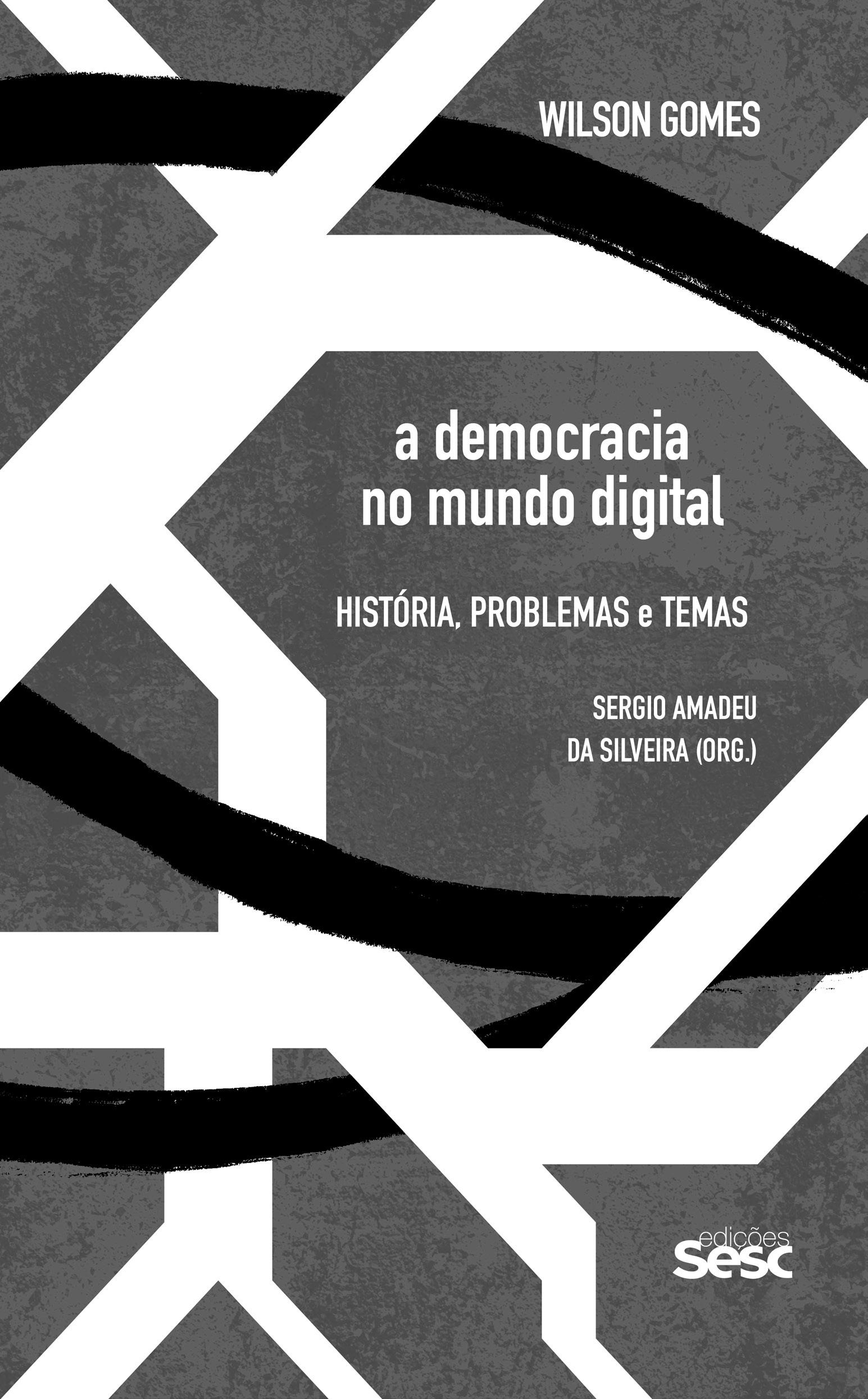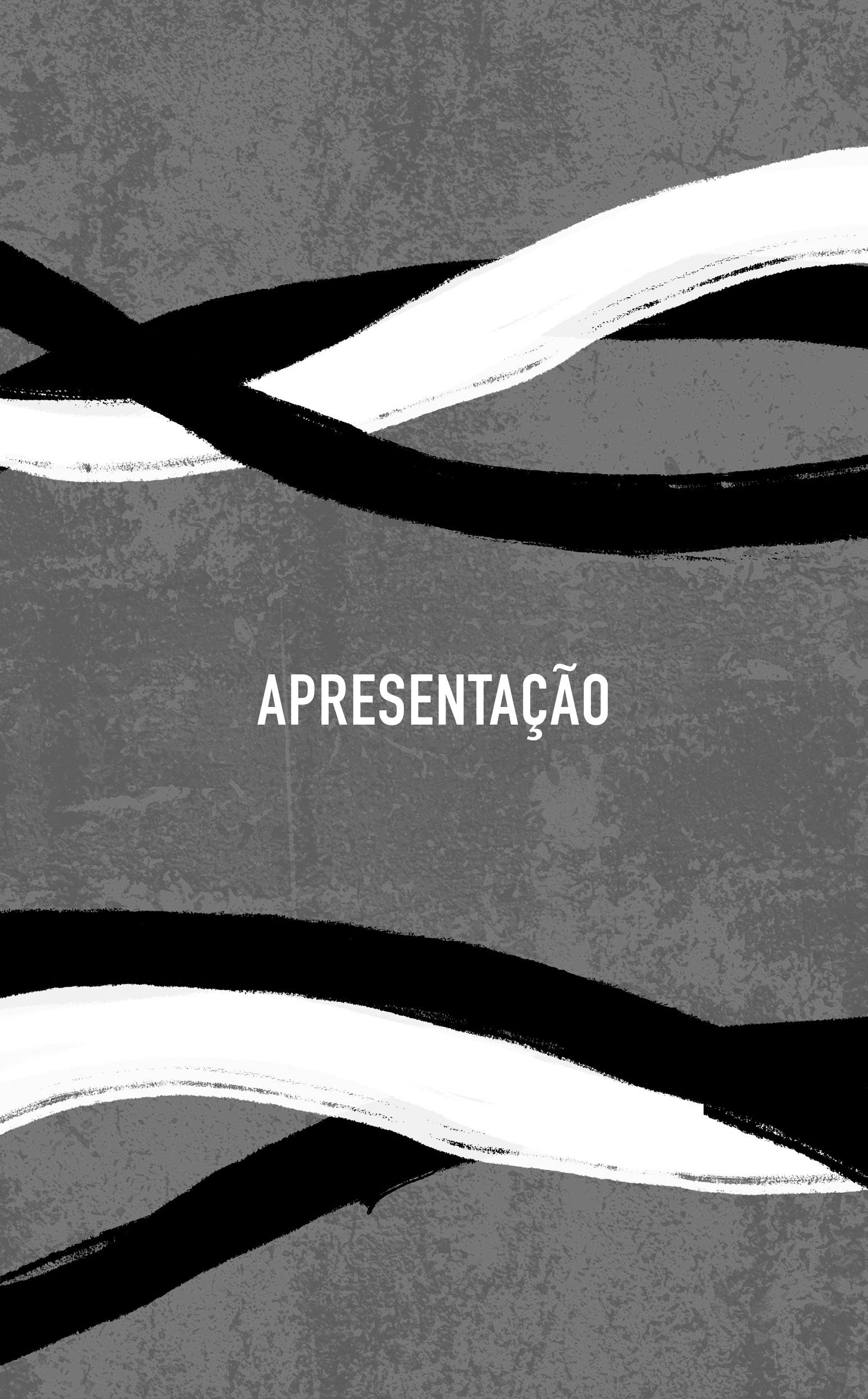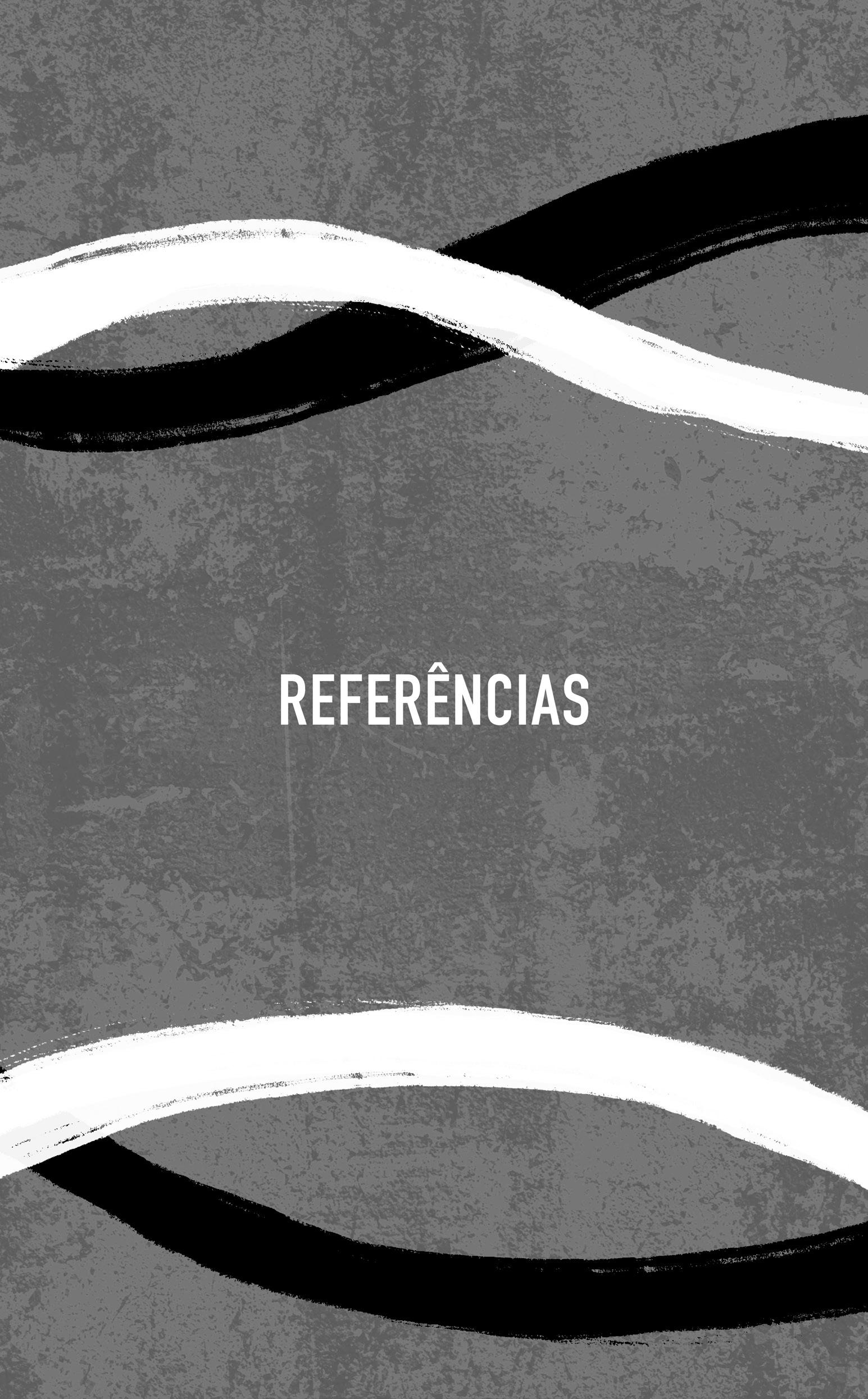SUMÁRIO
Capítulo 3
DESDE FINS DOS ANOS 1990, COM A DIFUSÃO da internet, palavras como interação, colaboração, troca, recombinação e compartilhamento passaram a organizar não apenas a gramática das redes digitais, mas também parte da própria dinâmica social. Trata-se de um conjunto de expressões ligadas a formas de produção e distribuição de informações e saberes que descortinam novos cenários, cobrando-nos esforços reflexivos para compreender seus efeitos, tanto pelas perspectivas da comunicação e da cultura como pelos vieses da educação, da economia e da política.
Hoje, é patente o alcance das redes de conexão digital em um país de dimensões continentais como o Brasil. Se, por um lado, a internet promove a dinamização sem precedentes das interações remotas e o exponencial incremento do acesso e da produção de conteúdo, por outro, nota-se em seus ambientes uma acirrada disputa pelas atenções (e adesões), que se vão revelando concentradas em um leque limitado de plataformas, sites e aplicativos.
Sob o crescimento do uso das redes no País, temas como liberdade, direitos humanos, igualdade social, censura,
BIASIOTTI, M. A.; NANNUCCI, R. “Implementing eDemocracy: eVoting and eParticipation”. In: CUNNINGHAM, M. (ed). eAdoption and the Knowledge Economy: Issues, Applications, Case Studies, Pts. 1 and 2, v. 1, 2004, pp. 745-50.
BJERKNES, G.; EHN, P.; KYNG, M. Computers and Democracy: A Scandinavian Challenge. Avebury: Gower, 1987.
BOBBIO, N. Il futuro della democrazia. Turim: Einaudi, 1984.
BOHMAN, J. Public Deliberation: Pluralism, Complexity and Democracy. Cambridge: MIT Press, 1996.
________ “Expanding Dialogue: The Internet, Public Sphere, and Transnational Democracy”. The Sociological Review, v. 52, pp. 47-64, 14 jun. 2004.
BONSÓN, E. et al. “Local e-Government 2.0: Social Media and corporate Transparency in Municipalities”. Government Information Quarterly, v. 29, n. 2, pp. 123-32, abr. 2012.
BOYD, D.; CRAWFORD, K. “Critical Questions for Big Data”. Information, Communication & Society, v. 15, n. 5, pp. 662-79, jun. 2012.
BOYD, D. M.; ELLISON, N. B. “Social Network Sites: Definition, History, and Scholarship”. Journal of Computer-Mediated Communication, v. 13, n. 1, pp. 210-30, out. 2007.
BRADLEY, D. “The Clinton Electronic Communications Project: An Experiment in Electronic Democracy”. Internet Research, v. 4, n. 1, pp. 64-70, 1994.
BRANDON, B. H.; CARLITZ, R. D. “Online Rulemaking and Other Tools for Strengthening Our Civil Infrastructure”. Administrative Law Review, v. 54, n. 4, pp. 1.421-78, 2002.
BRANTS, K. “Policing Democracy: Communication Freedom in the Age of Internet”. Javnost – The Public, v. 3, n. 1, pp. 57-70, 7 jan. 1996.
________. “The Internet and the Public Sphere”. Political Communication, v. 22, n. 2, pp. 143-6, abr. 2005.
BRANTS, K.; HUIZENGA, M.; VAN MEERTEN, R. “The New Canals of Amsterdam: An Exercise in Local Electronic Democracy”. Media, Culture & Society, v. 18, n. 2, pp. 233-47, 1 abr. 1996.
BREUER, A.; LANDMAN, T.; FARQUHAR, D. “Social Media and Protest Mobilization: Evidence from the Tunisian Revolution”. Democratization, v. 22, n. 4, pp. 764-92, 2015.
BROVELLI, M. A.; MINGHINI, M.; ZAMBONI, G. “Public Participation in GIS via Mobile Applications”. ISPRS Journal of Photogrammetry and Remote Sensing, v. 114, pp. 306-15, 2016.
BROWN, R. H. et al. The National Information Infrastructure: Agenda for Action. Washington D.C: US Department of Commerce, 1993.
BRUGGER, N. “Web Historiography and Internet Studies: Challenges and Perspectives”. New Media & Society, v. 15, n. 5, pp. 752-64, 1 ago. 2013.
________. “Introduction: The Webs First 25 Years”. New Media & Society, v. 18, n. 7, pp. 1.059-65, 1 ago. 2016.
BUCHSTEIN, H. “Bytes that Bite: The Internet and Deliberative Democracy”. Constellations, v. 4, n. 2, pp. 248-63, out. 1997.
CALHOUN, C. “Community without Propinquity Revisited: Communications Technology and the Transformation of the Urban Public Sphere”. Sociological Inquiry, v. 68, n. 3, pp. 373-97, jul. 1998.
CARLO BERTOT, J.; JAEGER, P. T.; GRIMES, J. M. “Promoting Transparency and Accountability through ICTs, Social Media, and Collaborative e‐Government”. Transforming Government: People, Process and Policy, v. 6, n. 1, pp. 78-91, 16 mar. 2012.
CARPIGNANO, P. “The Shape of the Sphere: The Public Sphere and the Materiality of Communication”. Constellations, v. 6, n. 2, pp. 177-89, jun. 1999.
CHADWICK, A. “Bringing E-Democracy Back in: Why It Matters for Future Research on E-Governance”. Social Science Computer Review, v. 21, n. 4, pp. 443-55, 1 nov. 2003.
CHAMBERS, S. A. “Democracy and (the) Public(s): Spatializing Politics in the Internet Age”. Political Theory, v. 33, n. 1, pp. 125-36, 1 fev. 2005.
CHARALABIDIS, Y. et al. “Public Policy Formulation through Non Moderated Crowdsourcing in Social Media”. In: TAMBOURIS, E.; MACINTOSH, E. A.; SAEBO, O. (org.). ePart 2012. Lecture Notes in Computer Science, v. 7.444. Berlim/Heidelberg: Springer, 2012, pp. 156-69.
DUTTON, W. H. “Political Science Research on Teledemocracy”. Social Science Computer Review, v. 10, n. 4, pp. 505-22, 1 dez. 1992.
EDWARDS, A. R. “Informatization and Views of Democracy”. In: VAN
DE DONK, W. B. H. J.; SNELLEN, I.; TOPS, P. W. (org.). Orwell in Athen: A Perspective on Informatization and Democracy. Amsterdã: IOS Press, 1995, pp. 33-49.
ELSHTAIN, J. B. “Democracy and the QUBE Tube”. The Nation, pp. 108-9, 1982.
ETZIONI, A. “Minerva: An Electronic Town Hall”. Policy Sciences, v. 3, n. 4, pp. 457-74, dez. 1972.
________. “Teledemocracy: Ross Perot Left the Residue of a Good Idea Behind Him: The Electronic Town Meeting”, The Atlantic, pp. 36-9, 1992.
FEROZ KHAN, G. et al. “From E-Government to Social Government: Twitter Use by Korea’s Central Government”. Online Information Review, v. 38, n. 1, pp. 95-113, 8 jan. 2014.
FLOOD, M. M. “Let’s Redesign Democracy”. Behavioral Science, v. 23, n. 5, pp. 429-40, 1978.
FOUNTAIN, J. “Electronic Government and Electronic Civics”. SSRN Electronic Journal, v. 18, pp. 185-212, 2003a.
________. “Prospects for Improving the Regulatory Process Using E-Rulemaking”. Communications of the ACM, v. 46, n. 1, pp. 63-4, 2003b.
FRIEDLAND, L. A. “Electronic Democracy and the New Citizenship”. Media, Culture & Society, v. 18, n. 2, pp. 185-212, 1 abr. 1996.
FROOMKIN, A. M. “Habermas@discourse.net: Toward a Critical Theory of Cyberspace”. Harvard Law Review, v. 116, n. 3, pp. 750-871, 2003.
GARCIA, A. C. B.; VIVACQUA, A. S.; TAVARES, T. C. “Enabling Crowd Participation in Governmental Decision-making”. Journal of Universal Computer Science, v. 17, n. 14, pp. 1931-50, 2011.
GASTIL, J. “Is Face-to-Face Citizen Deliberation a Luxury or a Necessity?”. Political Communication, v. 17, n. 4, pp. 357-61, out. 2000.
GASTIL, J.; DAVIES, T. “Digital Democracy: Episode IV – A New Hope: How a Corporation for Public Software Could Transform Digital
Finance – How to Avoid Dystopia and Upgrade Society by Digital Means. Cham: Springer, 2021, pp. 249-68. Disponível em: <https://doi. org/10.1007/978-3-030-62330-2_12>. Acesso em: set. 2024.
HELD, D. Models of Democracy. Cambridge: Polity Press, 1987.
HELLSTRÖM, J. “Mobile Participation? Crowdsourcing During the 2011 Uganda General Elections”. CM International Conference Proceeding Series, v. 46, n. 0, pp. 249-258, 2012.
HENMAN, P. “Governmentalities of Gov 2.0”. Information, Communication & Society, v. 16, n. 9, pp. 1.397-418, nov. 2013.
HERN, M.; CHAULK, S. T. U. “Roadgrading Community Culture: Why the Internet Is so Dangerous to Real Democracy”. Democracy & Nature, v. 6, n. 1, pp. 111-20, 2000.
HILBERT, M. “The Maturing Concept of E-Democracy: From E-Voting and Online Consultations to Democratic Value Out of Jumbled Online Chatter”. Journal of Information Technology & Politics, v. 6, n. 2, pp. 87-110, 12 maio 2009.
HOFF, J.; HORROCKS, I.; TOPS, P. W. Democratic Governance and New Technology: Technology Mediated Innovations in Political Practice in Western Europe. Londres: Routledge, 2000.
HOFF, J.; SCHEELE, C. E. “Theoretical Approaches to Digital Services and Digital Democracy: The Merits of the Contextual New Medium Theory Model”. Policy & Internet, v. 6, n. 3, pp. 241-67, set. 2014.
HOLLANDER, R. Video Democracy: The Vote-from-home Revolution. Mt. Airy: Lomond, 1985.
HOUSTON, A. L. et al. “Will Remote Electronic Voting Systems Increase Participation?”. Electronic Government, an International Journal, v. 2, n. 4, p. 353, 2005.
HURWITZ, R. “Who Needs Politics? Who Needs People? The Ironies of Democracy in Cyberspace”. Contemporary Sociology, v. 28, n. 6, pp. 655-61, 1999.
HYNES, M. “Digital Democracy: The Winners and Losers”. Em: The Social, Cultural and Environmental Costs of Hyper-Connectivity: Sleeping
Through the Revolution. Leeds: Emerald, 2021, pp. 137-53. Disponível em: <https://doi.org/10.1108/978-1-83909-976-220211009>. Acesso em: set. 2024.
IOSIFIDIS, P.; NICOLI, N. Digital Democracy, Social Media and Disinformation. Londres: Routledge, 2020. Disponível em: <https:// doi.org/10.4324/9780429318481>. Acesso em: set. 2024.
IYENGAR, S.; LUSKIN, R. C.; FISHKIN, J. S. “Facilitating Informed Public Opinion: Evidence from Face-to-Face and Online Deliberative Polls”. Annual Meeting of the American Political Science Association, Philadelphia, 2003.
JANSSEN, D.; KIES, R. “Online Forums and Deliberative Democracy”. Acta Politica, v. 40, n. S3, pp. 317-35, 15 set. 2005.
JANSSEN, M.; CHARALABIDIS, Y.; ZUIDERWIJK, A. “Benefits, Adoption Barriers and Myths of Open Data and Open Government”. Information Systems Management, v. 29, n. 4, pp. 258-68, set. 2012.
JAYASENA, G. N.; KARUNARATNA, D. D. “Towards an Enabling Framework for eDemocracy through the Integration of Citizen Participation along the Spatial Dimension Using Free and Open Source Technologies”. Proceedings of the 24th South East Asia Regional Computer Conference, Bangkok, Tailândia, v. 14, 2007.
JENSEN, J. L. “Virtual Democratic Dialogue? Bringing Together Citizens and Politicians”. Information Polity, v. 8, pp. 29-47, 2003.
JUNG, J.-Y.; QIU, J. L.; KIM, Y.-C. “Internet Connectedness and Inequality: Beyond the ‘Divide’”. Communication Research, v. 28, n. 4, pp. 507-35, 1 ago. 2001.
KANGAS, J.; STORE, R. “Internet and Teledemocracy in Participatory Planning of Natural Resources Management”. Landscape and Urban Planning, v. 62, n. 2, pp. 89-101, 10 jan. 2003.
KARDAN, A. A.; SADEGHIANI, A. “Is e-Government a Way to e-Democracy?”. Government Information Quarterly, v. 28, n. 4, pp. 466-73, out. 2011.
KAUN, A. “Our Time to Act Has Come: Desynchronization, Social Media Time and Protest Movements”. Media, Culture & Society, 21 abr. 2016.
MOSSBERGER, K.; WU, Y.; CRAWFORD, J. “Connecting Citizens and Local Governments? Social Media and Interactivity in Major U.S. Cities”. Government Information Quarterly, v. 30, n. 4, pp. 351-8, out. 2013.
MUHLBERGER, P. “Human Agency and the Revitalization of the Public Sphere”. Political Communication, v. 22, n. 2, pp. 163-78, abr. 2005.
NAISBITT, J. Megatrends. Nova York: Warner Books, 1982.
NAM, T. “Suggesting Frameworks of Citizen-sourcing via Government 2.0”. Government Information Quarterly, v. 29, n. 1, pp. 12-20, 2012.
NORRIS, P. Digital Divide: Civic Engagement, Information Poverty, and the Internet Worldwide. Nova York: Cambridge University Press, 2001.
NUGENT, J. D. “If e-Democracy Is the Answer, What’s the Question?”. National Civic Review, v. 90, n. 3, pp. 221-34, jan. 2001.
OBLAK ČRNIČ, T. “Idea(l)s on e-Democracy and Direct Online Citizenship”. Southeastern Europe, v. 36, n. 3, pp. 398-420, 1 jan. 2012.
OECD. “Understanding the Digital Divide”. Industrial Law Journal, v. 6, n. 1, pp. 52-4, 2001.
OGDEN, M. R. “Politics in a Parallel Universe: Is There a Future for Cyberdemocracy”. Futures, v. 26, n. 7, pp. 713-29, set. 1994.
OGUNLEYE, O. S.; VAN BELLE, J. P. “Exploring the Success, Failure and Factors Influencing m-Government Implementation in Developing Countries”. Proceedings of the IST-Africa Conference and Exhibition, 2014.
OOSTVEEN, A.-M.; VAN DEN BESSELAAR, P. “Internet Voting Technologies and Civic Participation: The Users’ Perspective”. Javnost – The Public, v. 11, n. 1, pp. 61-78, 7 jan. 2004.
PANKOWSKA, M. “Government 2.0: Innovation for E-Democracy”. In: Information Resources Management Association, Politics and Social Activism: Concepts, Methodologies, Tools, and Applications. 3 v. Hershey: IGI Global, 2016, pp. 1.509-27.
PAPACHARISSI, Z. “The Virtual Sphere: The Internet as a Public Sphere”. New Media & Society, v. 4, n. 1, pp. 9-27, 1 fev. 2002.
PATEMAN, C. Participation and Democratic Theory. Cambridge: Cambridge University Press, 1970.
STRECK, J. “Pulling the Plug on Electronic Town Meetings: Participatory Democracy and the Reality of the Usenet”. In: TOULOUSE, C.; LUKE, T. W. (org.). The Politics of Cyberspace. Londres: Routledge, 1998, pp. 18-47.
STREET, J. “Remote Control? Politics, Technology and ‘Electronic Democracy’”. European Journal of Communication, v. 12, n. 1, pp. 27-42, 1 mar. 1997.
STROMER-GALLEY, J. “Voting and the Public Sphere: Conversations on Internet Voting”. Political Science and Politics, v. 36, n. 4, pp. 727-31, 2003.
SUN, P.-L.; KU, C.-Y.; SHIH, D.-H. “An Implementation Framework for E-Government 2.0”. Telematics and Informatics, v. 32, n. 3, pp. 504-20, ago. 2015.
THIEL, S.-K. K. et al. “Insights from a m-Participation Prototype in the Wild”. Proceedings of the IEEE International Conference on Pervasive Computing and Communication Workshops (PerCom Workshops), St. Louis, 23-27 mar. 2015. Disponível em: <http://ieeexplore.ieee.org/ document/7134013/>. Acesso em: dez. 2017.
THIEL, S.-K.; LEHNER, U. “Exploring the Effects of Game Elements in M-Participation”. Proceedings of the 2015 British HCI Conference, Lincoln, UK, 13-17 jul. 2015. Disponível em: <http://dl.acm.org/citation. cfm?doid=2783446.2783587>. Acesso em: dez. 2017.
TOFFLER, A. The Third Wave. Toronto: Bantam Books, 1980.
TRECHSEL, A. H. et al. “Evaluation of the Use of New Technologies in Order to Facilitate Democracy in Europe”. STOA Working Paper 116 EN, European Parliament, 2004.
TRIMI, S.; SHENG, H. “Emerging Trends in M-Government”. Communications of the ACM, v. 51, n. 5, pp. 53-8, 1 maio 2008.
TSAGAROUSIANOU, R. “Back to the Future of Democracy? New Technologies, Civic Networks and Direct Democracy in Greece”. In: TSAGAROUSIANOU, R.; TAMBINI, D.; BRYAN, C. (org.). Cyberdemocracy: Technology, Cities and Civic Networks. Londres: Routledge, 1998, pp. 41-59.
WATSON, R. T. et al. “Teledemocracy in Local Government”. Communications of the ACM, v. 42, n. 12, pp. 58-63, dez. 1999.
WEARE, C. “The Internet and Democracy: The Causal Links Between Technology and Politics”. International Journal of Public Administration, v. 25, n. 5, pp. 659-91, 20 abr. 2002.
WESTEN, T. “E-Democracy: Ready or Not, Here It Comes”. National Civic Review, v. 89, n. 3, pp. 217-28, 2000.
WHITE, C. S. “Citizen Participation and the Internet: Prospects for Civic Deliberation in the Information Age”. The Social Studies, v. 88, n. 1, pp. 23-28, jan. 1997.
WHYTE, A.; MACINTOSH, A. “Transparency and Teledemocracy: Issues from an ‘E-Consultation’”. Journal of Information Science, v. 27, n. 4, pp. 187-98, 2001.
WIRTZ, B. W.; DAISER, P.; MERMANN, M. “Social Media as a Leverage Strategy for Open Government: An Exploratory Study”. International Journal of Public Administration, pp. 1-14, 9 mar. 2017.
WITSCHGE, T. “Online Deliberation: Possibilities of the Internet for Deliberative Democracy”. In: SHANE, P. M. (org.), Democracy Online: The Prospects for Political Renewal through the Internet, Nova York: Routledge, 2002.
YTTERSTAD, P.; WATSON, R. T. “Teledemocracy: Using Information Technology to Enhance Political Work”. MISQ, v. 20, n. 3, p. 347, set. 1996.
ZIMMER, M.; HOFFMANN, A. L. “Preface: A Decade of Web 2.0 –Reflections, Critical Perspectives, and Beyond”. First Monday, v. 21, n. 6, 10 jun. 2016.
ZINNBAUER, D. “Crowdsourced Corruption Reporting: What Petrified Forests, Street Music, Bath Towels, and the Taxman Can Tell Us About the Prospects for Its Future”. Policy & Internet, v. 7, n. 1, pp. 1-24, mar. 2015.
Este livro também está disponível em formato ePub.
Saiba mais no site das Edições Sesc: bit.ly/democracia_digital
Fontes Baskerville e Helvetica
Papel
Capa: Supremo alta alvura 250 g/m2
Miolo: Pólen natural 80 g/m2
Impressão Maistype
Data Março 2025



